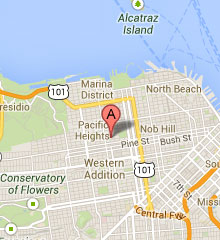The health of our bones is something many of us take for granted. We assume that our bones will always be there for us – that they will remain strong as long as we need them, with little thought or effort on our behalf.
However, as we age, our bones require just as much care and attention as any other part of our bodies. No one wants to suffer a broken bone because of what could have been a minor injury or fall. In honor of National Osteoporosis Awareness and Prevention Month, PGOMG will do our part to spread awareness and educate our patients and readers about osteoporosis.
What is osteoporosis?
Osteoporosis is a bone disease that causes bones to become brittle and weak. We often forgot that our bones are very much alive, with tissue that should grow at a healthy rate. Osteoporosis stunts tissue growth, which can cause a person to lose bone and/or make too little of it. This in turn causes weakness, and when bones are weak, they are more prone to breaking, even during a minor fall or from knocking into a table.
Who’s at risk for osteoporosis?
Women are generally more prone to osteoporosis, but men can have the condition as well. In fact, according to the National Osteoporosis Foundation, “A woman’s risk of breaking a hip due to osteoporosis is equal to her risk of breast, ovarian and uterine cancer combined. And a man age 50 or older is more likely to break a bone due to osteoporosis than he is to get prostate cancer.”
Here are some risk factors for osteoporosis:
- If you are age 50+
- If you are menopausal
- If you have a family history of osteoporosis
- If you are of low body weight or small stature
- If you use tobacco products
- If you consume heavy amounts of alcohol
- If you are inactive
- If your diet is low in vitamin D and calcium
How is osteoporosis treated?
Your doctor can choose to treat osteoporosis in a variety of ways, depending on the severity of your individual situation. Most doctors will recommend a diet high in calcium and vitamin D, along with an increase in exercises designed to improve bone strength, such as walking or cycling. Lifestyle changes are also likely needed – no more smoking or inactivity allowed.
Many people will think, “I’m too young to have osteoporosis”, but this bone disease can impact a person’s life as early as age 50. Fortunately, as explained above, there are treatment options that can improve bone health and cut down on risk of serious injury due to bone weakness. If you believe you may have osteoporosis, we encourage you to contact your provider today to discuss your symptoms.


